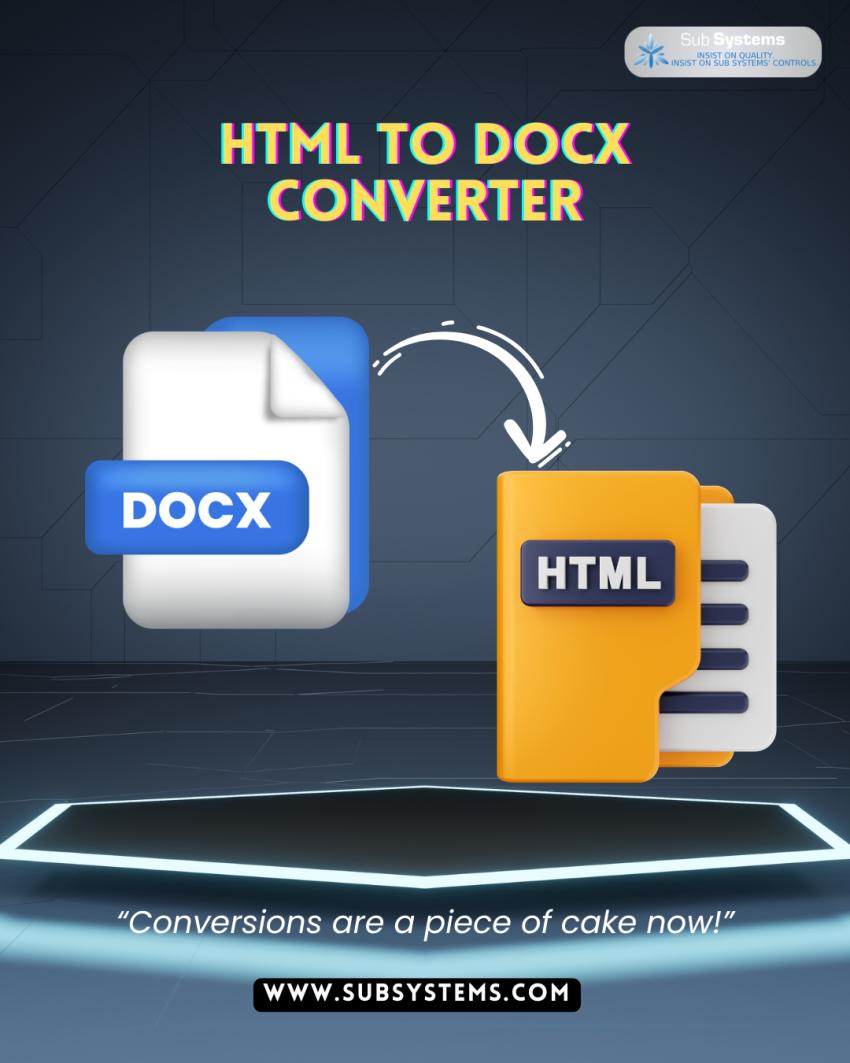
Time is the most precious commodity to any web worker. Hand-formatting content wastes hours and introduces errors into your site. This is where a DOCX to HTML Converter makes a big difference. It lets you write a Word file and turn it into clean, readable HTML painlessly. If you have to publish online frequently, this tool keeps you both accurate and fast. With the right converter, you can instead be focusing on real work instead of figuring out where your code went awry. Let’s see how this plays out and why it’s important.
Understanding DOCX and HTML Formats
Before we talk about the tool, it helps to know what these formats mean. DOCX is the format used by Microsoft Word for documents. It contains text, images, tables, and styles. HTML is the language of web pages. It controls how content appears in browsers. Both formats are important in serving different purposes.
DOCX to HTML conversion means taking your Word content and translating it into code a site can render. Manual work is tedious and bug-ridden. That is why you need an automated method.
Why Use a DOCX to HTML Converter?
Manual conversion often leads to issues. Fonts can break, images might not load, and layout can look wrong. A DOCX to HTML Converter solves these problems by handling everything for you. It keeps styles like fonts, headings, colors, and alignment. It also supports images and tables without breaking the design.
Using a converter means you get:
● Faster content updates for websites
● Clean and consistent HTML output
● Less risk of broken pages
How the Right Tool Boosts Productivity
Choosing the right DOCX to HTML Converter can save hours every week. Manual conversion often leads to fixing broken layouts and missing elements. With an advanced tool, the process becomes fast and accurate. Here is how it helps improve productivity:
● One-Click Conversion: No need to copy and paste code manually
● Consistent Formatting: Fonts, headings, colors and tables remain intact
● Reduced Errors: Automatic handling of images and links without breaking the layout
● Better Workflow: Direct integration into applications for faster publishing
● Time-Saving for Teams: Content moves from Word to web in seconds
A reliable tool means less effort and better results for every project.
Subsystems that Make It Powerful
This converter uses two main parts. One is a DOCX parser from TE Edit Control. The other is an HTML parser from the HTML Add-on product. Together they create a robust and cost-efficient solution. You get the power of both systems in one package.
The converter supports these features:
● Fonts, colors and different character styles
● Paragraph formatting like centering, indentation and justification
● PNG, JPEG, WMF and EMF image support
● Embedded and linked graphics that save to disk automatically
● Headers and footers
● Tables and nested tables
● Unicode and vertical text
● HTML code output that can be saved to disk or a memory buffer
These features cover most needs for developers and content teams.
New Features in Version 14
The latest version includes:
● Better line spacing
● Improved multi-paragraph border support
● Enhanced processing for right-to-left language layouts
● Unicode in footnotes
● More support for complex tables and list formatting
● Full compatibility with TE Edit Control version 32
● Bug fixes for stable performance
These upgrades make the tool more reliable for daily tasks.
Final Thoughts
Using a DOCX to HTML Converter is a smart way to simplify content publishing. It helps convert Word files into clean HTML without wasting time on manual coding. The right tool keeps formatting, images, and tables accurate while saving hours of work. It also reduces mistakes that can affect the design of your website. With strong features and easy integration across different platforms, this converter fits well in any workflow. If you deal with Word documents regularly and need quick web-ready content, this solution offers speed and consistency for your projects. To experience the best, use Subsystems converter tool.


